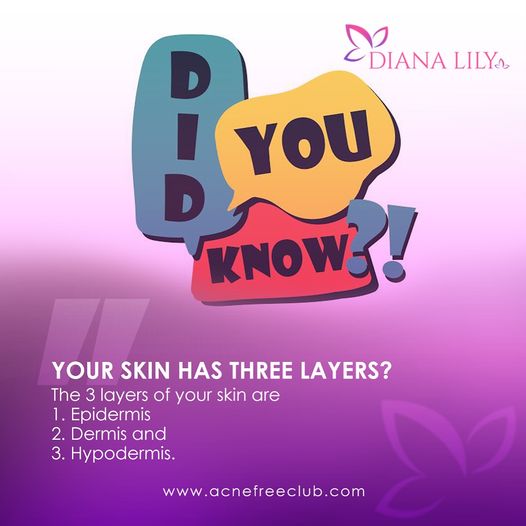Understanding these layers is key to unlocking the secrets of healthy, radiant skin. Take care of your skin from the inside out, and it will thank you with a natural glow!
What are the layers of the skin?
Three layers of tissue make up the skin:
- Epidermis, the top layer.
- Dermis, the middle layer.
- Hypodermis, the bottom or fatty layer
What does the epidermis (top layer of skin) do?
Your epidermis is the top layer of the skin that you can see and touch. Keratin, a protein inside skin cells, makes up the skin cells and, along with other proteins, sticks together to form this layer. The epidermis:
- Acts as a protective barrier: The epidermis keeps bacteria and germs from entering your body and bloodstream and causing infections. It also protects against rain, sun, and other elements.
- Makes new skin: The epidermis continually makes new skin cells. These new cells replace the approximately 40,000 old skin cells that your body sheds every day. You have new skin every 30 days.
- Protects your body: Langerhans cells in the epidermis are part of the body’s immune system. They help fight off germs and infections.
- Provides skin color: The epidermis contains melanin, the pigment that gives skin its color. The amount of melanin you have determines the color of your skin, hair, and eyes. People who make more melanin have darker skin and may tan more quickly.
What does the dermis (middle layer of skin) do?
The dermis makes up 90% of skin’s thickness. This middle layer of skin:
- Has collagen and elastin: Collagen is a protein that makes skin cells strong and resilient. Another protein found in the dermis, elastin, keeps skin flexible. It also helps stretched skin regain its shape.
- Grows hair: The roots of hair follicles attach to the dermis.
- Keeps you in touch: Nerves in the dermis tell you when something is too hot to touch, itchy, or super soft. These nerve receptors also help you feel pain.
- Makes oil: Oil glands in the dermis help keep the skin soft and smooth. Oil also prevents your skin from absorbing too much water when you swim or get caught in a rainstorm.
- Produces sweat: Sweat glands in the dermis release sweat through skin pores. Sweat helps regulate your body temperature.
- Supplies blood: Blood vessels in the dermis provide nutrients to the epidermis, keeping the skin layers healthy.
What does the hypodermis (bottom layer of skin) do?
The bottom layer of skin, or hypodermis, is the fatty layer. The hypodermis:
- Cushions muscles and bones: Fat in the hypodermis protects muscles and bones from injuries when you fall or are in an accident.
- Has connective tissue: This tissue connects layers of skin to muscles and bones.
- Helps the nerves and blood vessels: Nerves and blood vessels in the dermis (middle layer) get larger in the hypodermis. These nerves and blood vessels branch out to connect the hypodermis to the rest of the body.
- Regulates body temperature: Fat in the hypodermis keeps you from getting too cold or hot.
Your skin doesn’t just mark the boundary between you and your environment. It serves a critical health function, protecting you from disease and exposure.
If you notice excessive bruising, wounds that have trouble healing, bleeding moles, painful cysts, or skin that tears easily, you should make an appointment with our health care professional at https://www.acnefreeclub.com/get-started/.

